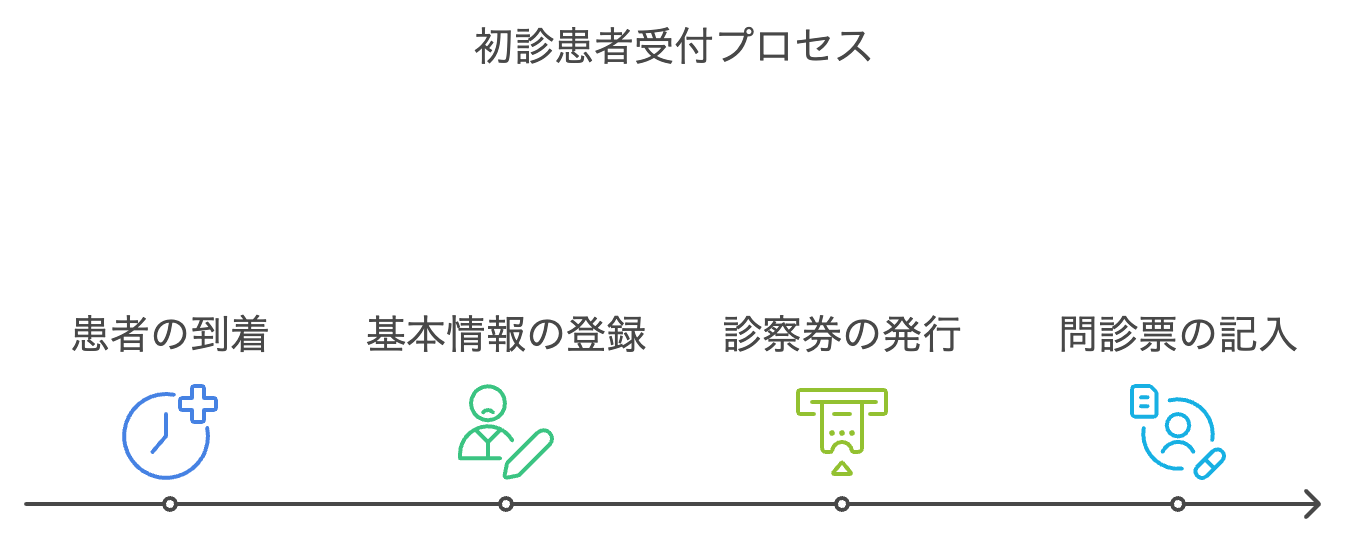整形外科における関節リウマチ、骨粗鬆症などのリウマチ疾患に関する会話例と英語フレーズ
整形外科では、**関節リウマチ(Rheumatoid Arthritis, RA)や骨粗鬆症(Osteoporosis)などのリウマチ疾患(Rheumatic Diseases)**が頻繁に診察されます。関節リウマチは、免疫系が関節を攻撃する自己免疫疾患で、関節の痛み、腫れ、こわばりを引き起こします。骨粗鬆症は、骨が脆くなり、骨折のリスクが高まる疾患です。適切な治療と早期診断が、症状の進行を抑える鍵となります。
この記事では、リウマチ疾患に関連する患者との診察を想定し、特有の会話例と重要なフレーズを学びます。
患者の設定
- 名前: Yukiko Tanaka (60歳、女性)
- 職業: パートタイムの事務職
- 主な症状: 両手の関節の痛みと腫れ、朝のこわばり、歩行時の股関節と膝の痛み。
- 既往歴: 数年前から骨密度の低下を指摘されており、骨粗鬆症の治療を受けている。
- 生活習慣: 日常的に軽い運動をしているが、関節の痛みが活動を制限することが多い。
診察の流れと会話例
1. 初診での問診と症状の確認
Doctor: “Good afternoon, Mrs. Tanaka. I understand you’ve been experiencing pain and swelling in your hands, along with some stiffness in the morning. Can you tell me more about how long you’ve had these symptoms and if they affect any other joints?”
日本語訳: 「こんにちは、田中さん。両手の関節の痛みや腫れ、朝のこわばりがあるとお聞きしましたが、これらの症状はどのくらい続いていて、他の関節にも影響していますか?」
Patient: “The pain in my hands started a few months ago, and it’s gotten worse. I also have some pain in my knees and hips when I walk.”
日本語訳: 「手の痛みは数ヶ月前から始まり、だんだん悪化しています。歩くときには膝や股関節にも痛みを感じます。」
Doctor: “I see. So, you’ve been having pain and swelling in your hands, and now you’re also feeling pain in your knees and hips. Have you noticed any stiffness in the morning, or do the symptoms improve as the day goes on?”
日本語訳: 「なるほど。手の痛みと腫れがあり、今は膝や股関節の痛みも出てきたんですね。朝にこわばりを感じますか?それとも、時間が経つにつれて症状が改善しますか?」
Patient: “Yes, the stiffness is worse in the morning, but it gets a little better as I move around.”
日本語訳: 「はい、朝はこわばりがひどいですが、動くと少し良くなります。」
2. 関節リウマチと骨粗鬆症の原因の確認とリスクファクターの説明
Doctor: “Based on your symptoms, it sounds like you may have rheumatoid arthritis, which is an autoimmune condition that causes inflammation in the joints. This could explain the pain, swelling, and stiffness you’re experiencing. You mentioned you’re also being treated for osteoporosis. Are you currently taking any medications for that?”
日本語訳: 「症状から考えると、関節リウマチの可能性があります。これは、関節の炎症を引き起こす自己免疫疾患で、痛みや腫れ、こわばりを説明できるかもしれません。また、骨粗鬆症の治療も受けているとお聞きしましたが、現在どんな薬を飲んでいますか?」
Patient: “Yes, I’ve been taking medication for osteoporosis for a few years now.”
日本語訳: 「はい、数年前から骨粗鬆症の薬を飲んでいます。」
3. 検査の必要性と診断の説明
Doctor: “To confirm the diagnosis of rheumatoid arthritis and assess the extent of any joint damage, we’ll need to do some tests. We’ll start with blood tests to check for inflammation and specific markers associated with rheumatoid arthritis. We’ll also do X-rays or possibly an MRI to look at the condition of your joints. For your osteoporosis, we’ll want to measure your bone density to see if there’s been any progression.”
日本語訳: 「関節リウマチの診断を確定し、関節の損傷を評価するためにいくつかの検査を行います。まずは、炎症や関節リウマチに関連する特定のマーカーを確認するために血液検査を行います。また、関節の状態を見るためにレントゲンや場合によってはMRIを行うことも検討します。骨粗鬆症についても、骨密度を測定し、進行状況を確認しましょう。」
Patient: “Will the blood tests show if I have rheumatoid arthritis?”
日本語訳: 「血液検査で関節リウマチかどうか分かりますか?」
Doctor: “Yes, the blood tests can help us identify inflammation and check for markers like rheumatoid factor and anti-CCP antibodies, which are commonly seen in people with rheumatoid arthritis.”
日本語訳: 「はい、血液検査で炎症を確認し、リウマトイド因子や抗CCP抗体など、関節リウマチの患者さんに見られるマーカーを調べることができます。」
4. 診断結果と治療法の説明
Doctor: “If the tests confirm rheumatoid arthritis, the treatment will focus on managing the inflammation and preventing joint damage. We usually start with medications like NSAIDs to reduce pain and inflammation, and possibly disease-modifying antirheumatic drugs (DMARDs) to slow the progression of the disease. For your osteoporosis, we’ll continue monitoring your bone density and adjust your treatment if necessary.”
日本語訳: 「もし検査で関節リウマチが確認された場合、治療は炎症の管理と関節の損傷を防ぐことに焦点を当てます。通常は、まずNSAIDsのような薬で痛みや炎症を抑え、場合によっては疾患修飾性抗リウマチ薬(DMARDs)を使って病気の進行を遅らせることを目指します。骨粗鬆症については、引き続き骨密度を監視し、必要に応じて治療を調整します。」
Patient: “How long will I need to take the DMARDs if I have rheumatoid arthritis?”
日本語訳: 「もし関節リウマチでDMARDsを服用することになったら、どれくらいの期間続ける必要がありますか?」
Doctor: “Treatment for rheumatoid arthritis is usually long-term, and DMARDs are often taken for many years to help control the disease. The goal is to reduce inflammation, prevent joint damage, and maintain your quality of life. We’ll monitor your progress and adjust the treatment as needed.”
日本語訳: 「関節リウマチの治療は通常長期的になります。DMARDsは何年も服用して、病気をコントロールするのに役立ちます。治療の目標は炎症を抑え、関節の損傷を防ぎ、生活の質を維持することです。進行状況を監視しながら、必要に応じて治療を調整します。」
5. 症状管理と予防策
Doctor: “To help manage your symptoms of rheumatoid arthritis, it’s important to stay active and engage in low-impact exercises like swimming or cycling. This can help maintain joint flexibility and reduce stiffness. For your osteoporosis, we’ll continue to monitor your bone health, and it’s important to take your medications and ensure you’re getting enough calcium and vitamin D to strengthen your bones.”
日本語訳: 「関節リウマチの症状を管理するためには、水泳やサイクリングのような低衝撃の運動を行い、活動的でいることが重要です。これによって関節の柔軟性を維持し、こわばりを軽減できます。骨粗鬆症については、引き続き骨の健康状態を監視し、薬を服用し、カルシウムとビタミンDを十分に摂取することが重要です。」
Patient: “What kind of exercises should I focus on to help with my joints?”
日本語訳: 「関節に良いエクササイズはどんなものですか?」
Doctor: “You can start with gentle stretching and range-of-motion exercises to keep your joints flexible. For strengthening, resistance exercises using light weights or resistance bands can help. We’ll create a personalized exercise plan as part of your treatment.”
日本語訳: 「まずは、関節を柔軟に保つための軽いストレッチや可動域運動から始めましょう。軽いウェイトや抵抗バンドを使った筋力強化運動も有効です。治療の一環として、個別のエクササイズプランを作成します。」
学習ポイント
- 症状の確認: 関節リウマチや骨粗鬆症に関連する症状を確認するためのフレーズを学びましょう。例: “Are you experiencing pain or swelling in your joints, especially in your hands, knees, or hips?“(手、膝、股関節などの関節に痛みや腫れを感じますか?)
- 検査の説明: リウマチ疾患の診断に必要な検査の説明を学びます。例: “We’ll perform blood tests to check for markers associated with rheumatoid arthritis, and we may also do X-rays or an MRI to assess the condition of your joints.“(関節リウマチに関連するマーカーを確認するために血液検査を行い、関節の状態を評価するためにレントゲンやMRIを行うこともあります。)
- 治療法の説明: 関節リウマチや骨粗鬆症に対する治療法を説明するフレーズを学びます。例: “For rheumatoid arthritis, we recommend medications to reduce inflammation and prevent joint damage, along with physical therapy to maintain mobility.“(関節リウマチには、炎症を抑え、関節の損傷を防ぐ薬と理学療法をお勧めし、可動性を維持します。)
- リハビリと予防策: 関節リウマチや骨粗鬆症のリハビリや予防策を学びます。例: “Low-impact exercises like swimming or cycling can help reduce stiffness and maintain joint flexibility, while ensuring adequate calcium and vitamin D intake will help strengthen your bones.“(水泳やサイクリングのような低衝撃の運動はこわばりを軽減し、関節の柔軟性を維持するのに役立ちます。また、カルシウムやビタミンDを十分に摂取することで、骨を強化できます。)
関連キーワード: 関節リウマチ, 骨粗鬆症, リウマチ疾患, レントゲン, MRI, DMARDs, 骨密度, 英語会話例, 外国人対応



